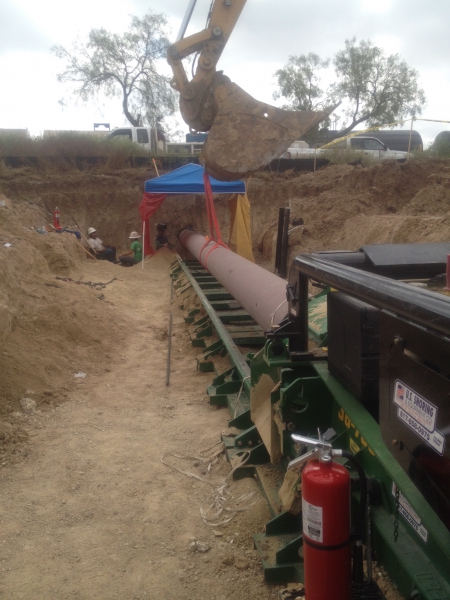
The process uses back reamers to widen the bore a quarter-inch larger than the pipe’s outside diameter. The sight holes also serve as slurry outlets, as all slurry is forced up through them - not into the pits - by the pipe during pullback. If the drilling head’s offgrade, it’s realigned with another rod that’s inserted down the hole and hooked onto the drill’s pilot stem. Pilot stem depth is checked at each hole with a laser sight and measuring rod dropped into the hole. “But I felt more comfortable after learning about the sight relief holes and how they’re used for monitoring and maintaining the grade.” How it stays ongradeīored vertically at 30-foot intervals, the 16-inch holes let engineers verify grade accuracy during, rather than after installation - a key improvement over traditional directional boring. “I had some experience with directionally drilled sewers, and I was skeptical about any method allowing us to keep the sewer line ongrade because of how flat it was,” Mills says. How it would maintain the required slope (0.28% of grade) was also a strong selling point. Because it would allow the pipe to be installed at the bore path’s bend radius without putting excessive side-load pressure on the pipe joints, the city and engineer deemed it their most effective installation option.
#Jack bore vs directional drilling install#
Tauser & Associates, a pipe manufacturer’s representative firm in Chesterfield, Mo.ĪrrowBore allows licensees to use standard HDD equipment to install pipelines ongrade and online with help from laser technology and vertical sight holes drilled along the bore path. Dimitroff developed ArrowBore 13 years ago in response to changing attitudes among sewer and water contractors, who were looking for an easier way to complete infrastructure projects as well as to provide a more eco-friendly and less invasive alternative to existing open-excavation methods.Īllen & Hoshall learned about it from R.H.

The city’s consulting engineer, Allen & Hoshall of Memphis, Tenn., recommended ArrowBore, a patented tight-tolerance HDD method developed by Ted Dimitroff, president of Columbia, Mo.-based Trenchless Flowline Inc. Horizontal directional drilling (HDD), however, hasn’t always had the best track record of producing ongrade sewers. There was very little slope in the proposed bore path.” “Directional boring was the best way to minimize residential impact, but with a manhole every 300 to 400 feet we had to find technology that would keep the sewer ongrade. “We didn’t want to dig a 17-foot trench or close off any roads, and dirt management alone would have been a nightmare,” Mills says. The project presented a challenge, though: installing a gravity sewer line in a well-established neighborhood with curved streets. Ultimately, the bypass will consist of 1,900 feet of gravity sewer leading to a pump station and another 2,000 feet of force main going to an outfall sewer. “We decided to create a bypass to collect and divert the flow from this basin and pump it away from the heavily charged area.”

“We wanted to improve service for existing customers and make sure future developments aren’t hindered,” says Public Services Director Bo Mills, who is also the American Public Works Association’s Region III director. And that was before a zoning ordinance allowed five-story buildings to be built in the sewer basin’s upper reaches.

#Jack bore vs directional drilling full#
The sewer was running near full capacity every day and occasionally overflowed during heavy rains. Three years ago, the City of Germantown, Tenn., began making plans to install a new gravity sewer system in a 1970s-era subdivision to relieve an overburdened concrete sewer line.


 0 kommentar(er)
0 kommentar(er)
